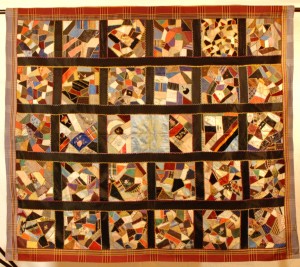The most obvious practical reason for women to make quilts was so their families could use them. In nineteenth century America, which was still primarily an agricultural society, women were usually in charge of all sewing, mending, and knitting, and this included making bedding and quilts for their families(5). Having adequate bedding was especially important for women who moved west, as they and their families often lived in primitive conditions for long periods of time, and quilts were necessary to keep warm and protect against the wind and the cold. For families traveling west, quilts could function as packing material to protect any delicate objects (6). Thus, quilting was a very important skill that girls began learning at a young age in order to adequately master it by the time they were grown and had families depending on them to provide quilts for their warmth. Quilts also had sentimental value for women who came west, often leaving friends and extended family behind. Quilts could provide women with keepsakes and memories of the lives they left behind, and they added some beauty and color to the minimalist lives of those who migrated west(7).
Making quilts provided women of every class with an opportunity to socialize. Often a large group of women would get together to help one finish a quilt she had been working on (8). These gatherings would have been especially important to women in the west, particularly rural women who lived miles away from their nearest neighbor and had few opportunities to socialize and meet friends in their new home. Among middle- and upper-class women, quilting could be a form of charity work, which also ties in with the social aspect of quilting (9). It provided reasons for women to gather and enjoy the company of friends. Quilts were primarily utilitarian, at least in nineteenth century rural America, but they simultaneously served other functions as well.
